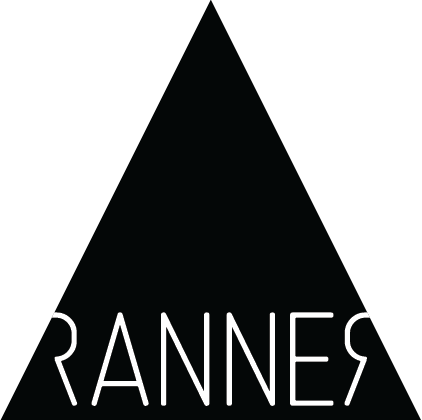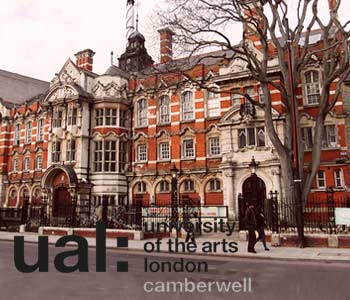— 1st OCTOBER– 31st DECEMBER 2016
I will be joining the Camberwell College of Arts in the BA Illustration programme as Associate Lecturer for the upcoming term, from Oct– Dec 2016. Together with Thom Swann I will be leading the 'Novelty' elective on the trans-disciplinary program "The Expanded Designer". This elective was a preparatory exercise for the student's final dissertations and emphasised a practical connection to the student's studio work.
Here is the student brief we specifically developed for this writing elective:
"FUTURE PAST"
Design can be at once a proposition and a statement — a ‘This?’ and a ‘This!’ as described in Dilnot’s (2015) pithy encapsulation. Tonkinwise (2015) argues that designs are essentially “criticisms of things about the present. Design criticises (the present) by making (future) alternatives.” But design can be also treated as “a conversation for action… [about] what to conserve and what to change, a conversation about what we value” (Dubberly & Pangaro, 2015), involving “a process of observing a situation as having some limitations, reflecting on how and why to improve that situation, and acting to improve it.” This last line hints towards considerations that goes beyond the actual act of designing itself, but to closer observation of the context in which it happens. When we speak of “novelty” in this elective, we want you to critically examine the term, as well as framing design as your subject of consideration
in (i) temporal and (ii) contextual (iii) propositional terms:
(i) In temporal terms, by putting into place certain conditions and affordances and not embodying others, design is also a form of prediction about the future. If not carefully treated, this characteristic can become self-fulfilling: design to some extent ‘creates’ the future it predicts. We inhabit and interact with the results (and in some cases the aftermath) of other people’s predictions. As Jenny Holzer puts it “we live the surprise results of old plans” (Holzer, 1983-5). Holzer’s pithy statement means, that we are living in the ruins of other people’s visions — and if we aren’t careful, our children will live in the ruins of ours.
(ii) In contextual terms, which is inevitably also temporal and vice versa, we want you to focus specifically on the context in which a design is generated and what kind of external influences went “unseen” into a design artefact, the “ghosts of the past that act as active agent of change, as a spectre of the future” (Ericson, 2008). Derrida calls this principle “hauntology”— a dialectical progress that shapes a future through an active dialogue with the past (Derrida, 1993).
(iii) In propositional terms, a design is configurational and intermediate. Here, we would like you to put the two previous analyses together and flesh out how a chosen context or temporality of the past has influenced our present life of today. But we also want to ask you to find an example of how alternative futures could be discovered in the past. Or to put it in Frederic Pohl’s words “A good science fiction story should be able to predict not the automobile, but the traffic jam.” (cited by Lambourne et al. (1990)). We would like you to think along Derrida’s line “The greatest modernisers inaugurate their career with a backward leap, and a renaissance proceeds through a return to the past, a recycling, and hence a revolution. (...) Behind the 're' of reformation, republic or revolution, there is a hand flicking through the pages of a book, from the end back to the beginning. Whereas the finger that pushes a button, fast-forwarding a tape or disc, will never pose a danger to the establishment.”
In this third pillar we want you to think about the ‘re’ as of re-invent, re-iterate, re-visit. Designers often repeat and simulate the past, by presenting already existing historical innovations as new — sometimes unknowingly, due to lack of historical knowledge or context, sometimes by ignorance, sometimes down to homogenous visions and version of what “the future” looks like. Instead, we want you to better understand the potential that lies in revisiting and studying shifted contexts, histories and the original and peculiar works along that line that have shaped our lives today (positively and negatively).
Question 1
Can you identify and uncover examples of “simulated modernity” — designs or artefacts that mimic progress, but that are inherently conservative and merely translational?
(Try to avoid the influence of normcore ‘futures’ aesthetic’ and focus on revealing dismissed and/or forgotten ancient wisdoms that may be truly futuristic and transformative when applied to today’s context). Please identify one or two examples of a potential “ancient innovation” that may make more sense today than they did in the past. Contrast them with the firstly found example(s) and synthesise the two into a discussion.
Question 2
Choose a historical art or design movement and argue, in relation to the contemporary political and social climate, why it would make a good theoretical basis for a new design movement/practice
References / Reading list
Burckhardt, L. (1980). Design is Invisible. In J. Fezer and M. Schmitz, ed. Lucius Burckhardt Writings. Rethinking Man-made Environments: Politics, Landscape & Design, Vienna: Springer Vienna, pp. 153-165.
Bennett, J. (2010). Vibrant Matter. Duke University Press: Durham.
Caccavale, E. and Shakespeare, T. (2014). Thinking Differently About Life: Design, Biomedicine, And "Negative Capability". In: S. Yelavich and B. Adams, ed., Design As Future-Making, 1st ed. London: Bloomsbury, pp.25-35.
Capra, F. (1996). The Web of Life. London: Flamingo, pp.3-35. [available at: http://ds1416.risd.gd/uploads/CAPRA_WEBofLife.pdf}]
Derrida, J. (1993). Specters of Marx. Routledge: London. p.9, 63, 202.
Dilnot, C. (2014). Reasons To Be Cheerful, 1, 2, 3 …* (Or Why The Artificial May Yet Save Us). In: S.
Yelavich and B. Adams, ed., Design As Future-Making, 1st ed. London: Bloomsbury, pp.185-197.
Dilnot, C. (2015). History, Design, Futures: Contending with what we have made. In: Fry, T., Dilnot, C & Stewart, S.C., Design and the Question of History. Bloomsbury, London.
Dunne, A. (2005). The Electronic as Post-optimal Object. In: Hertzian Tales, 1st ed. Cambridge: MIT Press, pp.7-11.
Ericson, M. (2008). Design and Ideology [available at: http://www.experimentaljetset.nl/archive/designideology]
Goodman, N. (1978). Ways of Worldmaking. Indianapolis: Hackett Pub. Co, pp.1- 22. lzer, J. (1983-5). Survival series. [available at e.g. http://www.arthistorysalon.com/?p=452]
Latour, B. and Porter, C. (1991). What Does It Mean To Be a Modern? In: We have never been modern, pp. 10-12.
Lockton, D., Ranner, V. (2017). Plans and speculated actions: Design, behaviour and complexity in sustainable futures. In Chapman, J. ed., The Routledge Handbook of Sustainable Product Design. Routledge: London.
Tonkinwise, C. (2015). Just Design: Being Dogmatic about Defining Speculative Critical Design Future Fiction. Working paper. [available at: https://www.academia.edu/15086757/Just_Design_Being_Dogmatic_about_Defining_Speculative_Critical_Design_Fiction_Futures]

